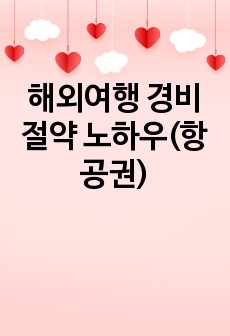일본 승려들의 송대 喫茶 문화 경험과 수용 -나한도를 중심으로-
(주)코리아스칼라
- 최초 등록일
- 2023.04.03
- 최종 저작일
- 2022.09
- 27페이지/
 어도비 PDF
어도비 PDF
- 가격 6,600원

* 본 문서는 배포용으로 복사 및 편집이 불가합니다.
서지정보
ㆍ발행기관 : 동양미술사학회
ㆍ수록지정보 : 東洋美術史學 / 15권
ㆍ저자명 : 이정은
목차
국문초록
Ⅰ. 머리말
Ⅱ. 일본에 전래된 차의 수용과 소비
1. 불교 의례에서의 공양물: 어영공(御影供), 천태대사공(天台大師供)
2. 궁중 의례에서의 소비: 계어독경(季御讀經)과 히키챠(引茶)
3. 밀교 법회에서의 사용: 북두법(北斗法)과 북두공(北斗供)
Ⅲ. 入宋 승려들의 천태산 순례와 그들이 경험한 차
Ⅳ. 나한도에 표현된 송대 의례와 청규로서의 喫茶
1. 나한회, 나한공
2. 입욕, 욕실
3. 반승(飯僧), 끽다, 끽다준비
Ⅳ. 맺음말
참고문헌
한국어 초록
본 논고는 일본 헤이안 시대 말에서 가마쿠라 시대 초기 중국에서 전래된 차의 수용 양상 을 천태대사공(天台大師供), 계어독경(季御讀經), 북두법, 나한신앙과 나한공을 중심으로 분석하여, 당시 궁정과 사원 의례 및 승원에서 사용된 차의 구체상에 대해 살펴본다. 특히, 입송(入宋) 일본 승려들의 일기류 문헌, 선원청규(禪苑淸規)를 포함한 송대 사원의 각종 규칙서, 당시 남송 승원의 모습을 담고 있는 것으로 생각되는 나한도에 표현된 끽다 관련 양 상을 함께 분석하여, 일송(日宋) 교류의 배경 속에서 입송 일본 승려들이 중국에서 경험한 사원 의례와 승원 문화 속 차의 모습이 어떤 것이었는지, 이것이 어떻게 일본에서 수용되었 는지 그 구체적 일면을 고찰한다. 의례적인 관점을 통해 단순한 기호 음료가 아닌 갖추어야 할 공양물로서의 차 그리고 영적인 효능이 기대되던 차의 구체적 사용양상을 이해할 수 있으 며, 중국 송대 사원의 의례와 규율이 일본에 전래된 정황을 파악할 수 있다.
영어 초록
This study analyzes the Japanese early reception of Chinese tea, focusing on how tea was used in Buddhist and court rituals in the late Heian and early Kamakura periods. By examining priests’ diaries, religious texts, ritual manuals, and illustrated handscrolls, this paper details how tea was used in royal court and temple rituals, including offering rituals for abbots of the Tendai Buddhist sect(天台大師供), court rituals of Buddhist priests’ chanting the Prajñā-Paramitā sutra praying for the emperor’s and the court’s health and safety(季御讀經), and the Buddhsit offering rituals to the seven stars of the Big Dipper/ rituals for the workshop of the Big Dipper(北斗法) as well as offering rituals to arhat (羅漢供). By analyzing in particular the diaries of Japanese priests who visited Song Dynasty China, various priests’ rule books of the Song Dynasty that includes Tea-drinking(喫茶), and tea practices depicted in arhat paintings from China and Japan, this paper analyzes accounts of monastic rules and lives from the Song dynasty and investigates the specific uses of teas in the temple rituals and monastery culture that Japanese monks experienced in China in the context of the Japanese-Song exchange.
참고 자료
없음
"東洋美術史學"의 다른 논문
더보기 (2/7)


















